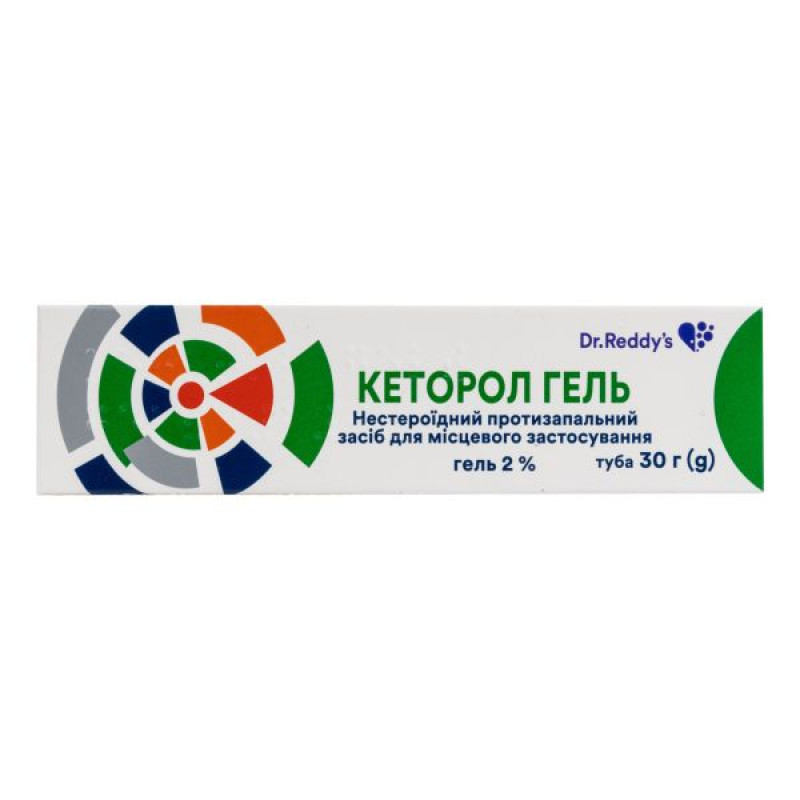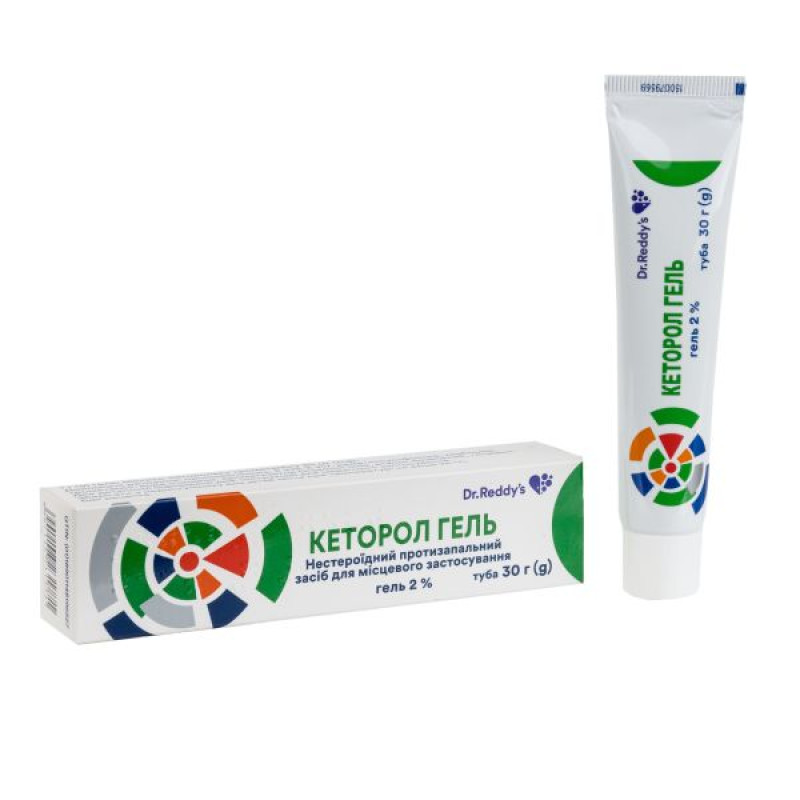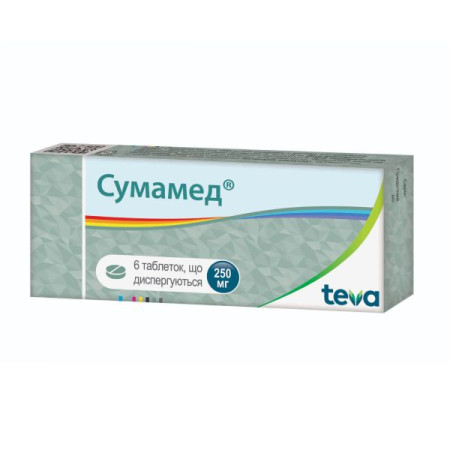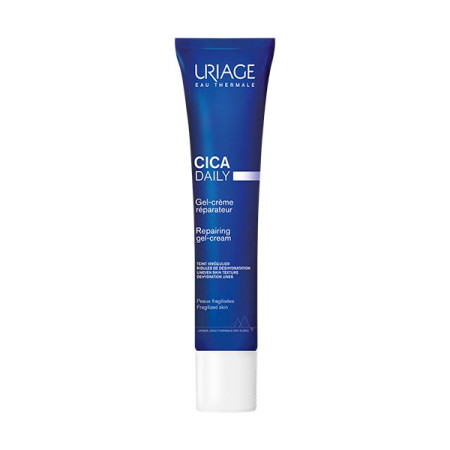Ketorol gel 2% tube 30 g
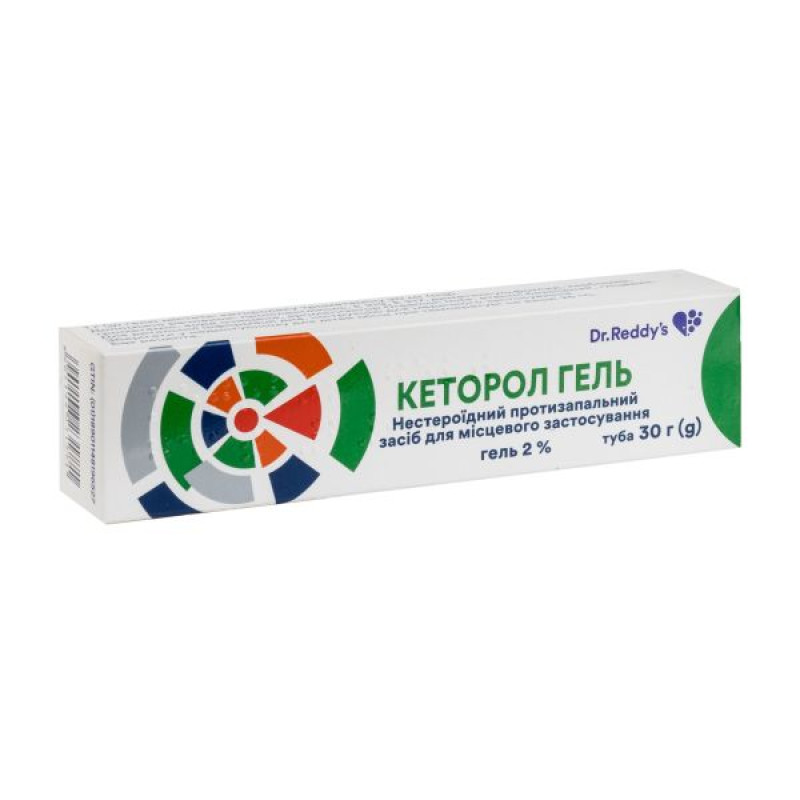
Instructions Ketorol gel 2% tube 30 g
Composition
active ingredient: ketorolac;
1 g of gel contains ketorolac tromethamine 20 mg;
excipients: propylene glycol, dimethyl sulfoxide, carbomer, sodium methylparaben (E 219), sodium propylparaben (E 217), tromethamine, purified water, Dreamon Inde flavoring (triethyl citrate, castor oil, isopropyl myristate, diethyl phthalate), anhydrous ethanol, glycerin.
Dosage form
Gel 2%.
Main physicochemical properties: homogeneous, almost transparent to transparent gel with a characteristic aroma.
Pharmacotherapeutic group
Nonsteroidal anti-inflammatory drugs for topical use, for joint and muscle pain. ATX code M02A A.
Pharmacological properties
Pharmacodynamics
Ketorolac is a nonsteroidal anti-inflammatory drug with a pronounced analgesic, antipyretic and anti-inflammatory effect. The mechanism of pharmacological action is associated with the blockade of the cyclooxygenase enzyme in peripheral tissues, resulting in inhibition of the biosynthesis of prostaglandins - modulators of pain sensitivity, thermoregulation and inflammation. Due to this, the therapeutic effect develops directly at the site of the lesion.
The drug contains dimethyl sulfoxide, the transporting ability of which enhances the penetration of ketorolac tromethamine through the skin directly to the affected tissues.
Pharmacokinetics
When using Ketorol gel, the maximum concentration in the blood plasma (Cmax) was found to be in the range from 0.18 to 0.82 μg/ml. The total area under the "concentration - time" curve was from 6.6 to 9.7 hours, respectively. Nonsteroidal anti-inflammatory drugs directly penetrate the skin to a depth of 3 - 4 mm, then are transported by the circulatory system to the subcutaneous tissues.
Indication
Post-traumatic inflammation and pain in muscles, ligaments, joints, soft tissue injuries, sprains, dislocations, bursitis, tendonitis, epicondylitis; inflammation of the synovial membrane; osteoarthritis of superficial joints.
Contraindication
Hypersensitivity to ketorolac, acetylsalicylic acid or other nonsteroidal anti-inflammatory drugs and/or other components of the drug;
exacerbation of gastric or duodenal ulcer, bleeding in the gastrointestinal tract, perforation;
Nasal polyposis syndrome, bronchospasm and angioedema due to the use of acetylsalicylic acid.
Interaction with other medicinal products and other types of interactions
No clinically significant interactions with other drugs have been reported with topical application of Ketorol gel, but it should be borne in mind that with the probable passage into the systemic circulation, interactions are possible that were observed with oral administration of ketorolac tromethamine. A slight decrease in the binding of warfarin to plasma proteins is known. In vitro studies have shown that at therapeutic concentrations of salicylate, the binding of ketorolac to plasma proteins decreases from 99.2% to 97.5%, which may lead to an increase in the content of free ketorolac. Ketorolac reduces the diuretic effect of furosemide by approximately 20%. With the combined administration of probenecid and ketorolac, an increase in the concentration of ketorolac in the blood plasma and an extension of its half-life from the body are observed. With simultaneous use with lithium preparations, inhibition of renal clearance of lithium is possible, so the content of lithium in the blood plasma may increase. Ketorolac may interact with non-depolarizing muscle relaxants, which may lead to respiratory depression. Concomitant use of ketorolac with angiotensin-converting enzyme inhibitors increases the risk of renal dysfunction, especially in patients with hypovolemia (decreased interstitial fluid volume). Concomitant use of ketorolac with anticoagulants may increase the risk of bleeding. Do not use with other NSAIDs due to increased side effects.
Application features
Do not apply the gel to areas around the eyes, mucous membranes or open wounds. Wash hands before and after application. Do not exceed the recommended dosage.
As with any non-steroidal anti-inflammatory drug (NSAID), there is a risk of bleeding and bruising. If this occurs, further use of the drug should be avoided.
Ketorol gel should be used with caution in patients prone to allergic reactions. If irritation occurs, treatment should be discontinued.
Elderly patients (aged 65 and over) are more sensitive to the effects of pharmaceuticals. Therefore, Ketorol gel should be used with caution in patients of this age group.
It is also recommended to use Ketorol gel with caution in people with impaired renal and/or hepatic function, with cardiovascular diseases, with arterial hypertension and in cases where previous ketorolac administration was accompanied by fluid retention and edema. Before starting and during treatment with Ketorol gel, it is recommended to monitor liver function tests. In case of an increase in liver enzymes compared to their values at the beginning of treatment, the use should be discontinued.
Use during pregnancy or breastfeeding
The drug is not used in pregnant women and women during breastfeeding.
Ability to influence reaction speed when driving vehicles or other mechanisms
It is necessary to take into account the possibility of drowsiness, dizziness, depression, insomnia, which leads to a decrease in concentration of attention, as a result of which the body's ability to react quickly when driving a vehicle or working with other mechanisms may deteriorate.
Method of administration and doses
Apply topically 3-4 times a day. Before applying Ketorol gel, wash and dry the affected area. Remove the gel from the tube onto the tip of your finger and apply to the skin with light massage movements, covering the areas around the affected area. It is advisable not to cover this area with clothing.
The duration of therapy depends on the indications and effectiveness of treatment.
Children
The drug is not used in children (under 18 years of age).
Overdose
There are no cases of overdose of ketorolac tromethamine in the dosage form of gel when applied externally to small areas of skin.
The development of systemic adverse reactions is possible when using the drug for a long time, in high doses or on large areas of skin. There is no specific antidote known. Treatment is symptomatic.
Side effects
Sometimes skin reactions (irritation, erythema, dermatitis) may occur at the site of application.
Expiration date
2 years.
Storage conditions
Store out of the reach of children at a temperature not exceeding 25 ºС.
Packaging
30 g of gel in a tamper-evident tube. 1 tube in a box.
Vacation category
Without a prescription.
Producer
Dr. Reddy's Laboratories Limited
Address
Production site - VI Village Khol, Nalagar Road, Baddi, Solan District, Himachal Pradesh, 173205, India
There are no reviews for this product.
There are no reviews for this product, be the first to leave your review.
No questions about this product, be the first and ask your question.







